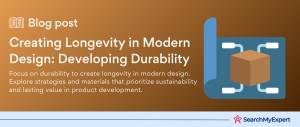Designing for Manufacturability
Design for Manufacturability (DFM) is an engineering practice that focuses on designing products in such a way that they are easy, cost-effective, and efficient to manufacture. This approach integrates the design and manufacturing processes, considering both from the early stages of product development. Here’s a breakdown of the key aspects of DFM:
Why DFM is Important:
- Facilitates Easier Manufacturing: By considering manufacturing constraints and processes early in the design phase, DFM ensures that the product can be manufactured smoothly.
- Cost Reduction: DFM helps in identifying and eliminating unnecessary costs in materials and manufacturing processes, leading to more economical production.
- Quality Assurance: It leads to higher quality products as the design is optimized for manufacturing, reducing the likelihood of errors and defects.
- Innovation in Design: Encourages innovative and practical design solutions that are not only aesthetically pleasing but also manufacturable.
- Environmental Impact: By optimizing materials and processes, DFM can contribute to more sustainable manufacturing practices.
Benefits of Designing for Manufacturability:
- Reduced Costs: By optimizing the design for manufacturing processes, it can significantly lower production costs.
- Faster Time to Market: Streamlining the design and manufacturing process reduces the time taken to bring a product to market.
- Improved Quality:
Products designed with manufacturability in mind tend to have fewer defects and higher overall quality. - Increased Efficiency: Reduces waste and increases the efficiency of the production process.
Common Challenges in Manufacturing and How DFM Helps:
- Complexity in Production: DFM simplifies the design to make it easier to produce.
- High Costs:
By optimizing the use of materials and processes, DFM helps in reducing production costs. - Quality Issues:
DFM involves rigorous testing and refinement of designs to ensure high quality. - Supply Chain Complexity: DFM can lead to simpler designs that are easier to manage within the supply chain.
- Environmental Concerns: DFM encourages the use of sustainable materials and processes, thereby reducing the environmental footprint.
Understanding Manufacturing Processes
Creating a detailed 1000-word overview for each of the specified manufacturing processes would result in an extensive document. I’ll provide a comprehensive summary of each process, focusing on their capabilities, limitations, and design constraints.
Injection Molding
Overview:
Injection molding is a widely used manufacturing process for producing parts in large quantities. It involves injecting molten material into a mold where it cools and solidifies into the final part.
Capabilities:
- High Volume Production:
Excellently suited for mass production due to its high efficiency and speed. - Material Diversity:
Compatible with a wide range of materials, particularly plastics. - Complex Geometries: Can produce parts with complex shapes and fine details.
- Consistency: Ensures high repeatability with consistent quality.
Limitations:
- High Initial Costs:
The cost of mold design and production can be significant, making it less economical for small runs. - Material Limitations:
Not all materials are suitable for injection molding, particularly those with high melting temperatures or corrosive properties. - Design Restrictions:
Certain design elements, like undercuts or extremely thin walls, can complicate or render the process infeasible.
Design Constraints:
- Draft Angles:
Essential to facilitate easy ejection of the part from the mold. - Uniform Wall Thickness:
Prevents issues like warping or sink marks. - Ribs and Gussets: Used to strengthen parts without increasing wall thickness.
Machining
Overview:
Machining is a subtractive process where material is removed from a workpiece to shape it into the desired form. It includes various techniques like milling, turning, and drilling.
Capabilities:
- Versatility: Suitable for a wide range of materials, including metals, plastics, and composites.
- Precision:
Capable of achieving tight tolerances and excellent surface finishes. - Customization:
Ideal for custom or one-off parts.
Limitations:
- Material Waste:
Subtractive nature leads to material wastage. - Complexity and Cost:
Intricate designs can be time-consuming and expensive to machine. - Size Limitations:
The size of the part is constrained by the size of the machining equipment.
Design Constraints:
- Tool Access: Parts must be designed to allow for the tool to reach all surfaces.
- Internal Corners: Typically rounded due to the shape of the cutting tool.
- Avoiding Thin Walls:
Can lead to vibration and inaccuracies during the machining process.
CNC Milling
Overview:
CNC milling is a specific type of machining process controlled by computer programming. It is widely used for its precision and ability to produce complex geometries.
Capabilities:
- Complex Parts: Can create intricate and detailed parts.
- Automation:
A high level of automation increases consistency and reduces labor. - Material Flexibility:
Compatible with a wide array of materials.
Limitations:
- Costly for Small Runs:
The setup and programming can be expensive for short production runs. - Size Constraints: Limited by the size of the CNC machine.
- Skill Requirement:
Requires skilled personnel for programming and operation.
Design Constraints:
- Tool Path Consideration: The design must accommodate the movement and size of cutting tools.
- Tolerances:
While precise, there are still limitations to the tolerances achievable. - Fixturing and Setup: Parts must be designed to be securely held during the milling process.
3D Printing (Additive Manufacturing)
Overview:
3D printing, or additive manufacturing, is a process where a part is built layer-by-layer. It allows for the creation of complex and customized parts with less waste.
Capabilities:
- Complex Geometries:
Capable of producing designs that are impossible with traditional manufacturing methods. - Rapid Prototyping:
Quick turnaround from design to physical part. - Customization:
Ideal for one-off production and customization.
Limitations:
- Material Properties: Parts may have different mechanical properties compared to those made with traditional methods.
- Surface Finish: Often requires post-processing to achieve a smooth surface.
- Size Limitations:
Restricted by the print bed size.
Design Constraints:
- Overhangs and Supports: Designs must account for overhangs and the need for support structures.
- Layer Adhesion:
Consider the strength and orientation of layers in the design. - Wall Thickness:
Too thin walls might not print correctly, while too thick walls can lead to issues like warping.
Material Selection for Manufacturability
Selecting the right material is crucial in the design and manufacturing process. It significantly affects the manufacturability, cost, environmental impact, and sustainability of a product. Understanding material properties and their suitability for different manufacturing processes, along with other factors, is key.
Material Properties and Suitability for Manufacturing Processes
Plastics:
- Suitable Processes: Injection molding, 3D printing, CNC machining.
- Properties:
Lightweight, versatile, can be rigid or flexible, corrosion-resistant. Varieties like ABS, polycarbonate, and nylon offer different balances of strength, flexibility, and temperature resistance. - Considerations:
Some plastics are prone to warping during cooling (injection molding) or require specific conditions for effective 3D printing.
Metals:
- Suitable Processes:
CNC machining, metal injection molding, 3D printing (metal sintering). - Properties:
High strength, durability, thermal and electrical conductivity. Common metals include aluminum, steel, and titanium. - Considerations:
Material choice depends on the need for strength, weight, corrosion resistance, and conductivity. Some metals are difficult to machine or require specific types of 3D printers.
Composites:
- Suitable Processes:
CNC machining, injection molding (for composite plastics), 3D printing. - Properties:
Combine properties of different materials, often to increase the strength-to-weight ratio. Fiberglass and carbon fiber are common composites. - Considerations:
Complex to manufacture; machining can be challenging due to the hardness and abrasiveness of some composites.
Ceramics:
- Suitable Processes:
Injection molding, CNC machining, 3D printing (selective processes). - Properties: High hardness and temperature resistance, brittleness.
- Considerations: Difficult to machine due to brittleness; certain types of ceramics are suitable for specific 3D printing technologies.
Cost Considerations of Different Materials
- Initial Costs: Materials like titanium or carbon fiber composites are more expensive than common plastics or aluminum.
- Processing Costs:
Some materials require special handling or processing, increasing manufacturing costs (e.g., hardened steels in machining). - Volume and Scale:
Bulk purchasing and the scale of production can significantly impact material costs. - Life Cycle Costs: Durable materials might offer better long-term value despite higher initial costs.
Environmental Impact and Sustainability Factors
- Resource Extraction: Consider the environmental impact of material extraction (e.g., mining for metals).
- Energy Consumption:
Some materials require more energy to process, impacting their carbon footprint. - Recyclability: Materials like aluminum and certain plastics offer high recyclability, reducing environmental impact.
- Lifecycle Analysis:
Assess the entire lifecycle, including production, usage, and disposal, to understand the environmental impact. - Biodegradable Materials: Bioplastics and natural materials are gaining popularity for their lower environmental impact.
- Regulations and Compliance: Adherence to environmental regulations and standards is crucial in material selection.
Design for Assembly and Disassembly
Design for Assembly (DfA) and Design for Disassembly (DfD) are crucial aspects of product design that focus on simplifying the assembly process and facilitating easy disassembly, respectively. These approaches contribute to reduced manufacturing costs, enhanced product lifecycle management, and improved sustainability.
Minimizing Parts and Subassemblies
- Simplification: Reducing the number of parts in a product simplifies the assembly process, lowers production costs, and often increases product reliability.
- Integration: Design parts that combine multiple functions or features, reducing the need for additional components.
- Standardization:
Use standard parts and components when possible to minimize variety and complexity in assembly.
Design for Ease of Handling and Manipulation During Assembly
- Ergonomic Design:
Ensure parts are designed for easy handling, which can reduce assembly time and the risk of errors. - Orientation and Alignment:
Design parts that are self-aligning or have features that clearly indicate proper orientation to simplify assembly. - Accessibility: Ensure that all parts are easily accessible for assembly tools and operators.
Snap Fits, Quick-Release Mechanisms, and Modularity
- Snap Fits:
These allow for quick and tool-less assembly, reducing assembly time and cost. They are ideal for plastic parts. - Quick-Release Mechanisms: These enable fast and easy assembly and disassembly, useful in products that require frequent maintenance.
- Modularity:
Designing modular components can simplify both assembly and disassembly, as well as facilitate upgrades and repairs.
Considering Disassembly for Maintenance and Recyclability
- Ease of Disassembly: Design products so they can be easily disassembled for maintenance or end-of-life recycling, using minimal tools.
- Labeling Parts:
Clearly label parts to indicate how they should be disassembled and sorted for recycling or reuse. - Material Selection:
Choose materials that can be easily separated and recycled to reduce environmental impact. - Joining Techniques:
Use reversible joining techniques like screws or clips instead of permanent methods like welding or gluing.
Design for Tolerances and Dimensions
Designing for tolerances and dimensions is a critical aspect of product design and manufacturing. It involves specifying the allowable limits of variation in a part’s dimensions. Proper tolerance design ensures that parts fit together correctly, function as intended, and can be manufactured cost-effectively.
Understanding Tolerance Stack-Up and Its Impact on Product Functionality
Tolerance Stack-Up:
- This refers to the cumulative effect of tolerances on individual parts in an assembly.
- It’s important to understand how these tolerances add up in an assembly to ensure parts fit together and function properly.
- Mismanaged stack-up can lead to parts that don’t fit, function poorly, or require expensive rework.
Analysis Techniques:
- Use statistical methods or tolerance analysis software to predict the cumulative effect of tolerances.
- Consider worst-case scenarios where tolerances are at their limits to ensure functionality under all conditions.
Selecting Appropriate Tolerances Based on Manufacturing Process and Material
Process Capabilities:
- Different manufacturing processes have different inherent precision levels. For example, CNC machining can achieve tighter tolerances than casting.
- Understand the capabilities of the chosen manufacturing process and set tolerances accordingly.
Material Considerations:
- Material properties, such as thermal expansion, can affect how a part holds tolerances.
- Materials like plastics may require looser tolerances due to their tendency to warp or change dimensions with temperature.
Functionality vs. Cost:
- Tighter tolerances often increase manufacturing costs. It’s crucial to balance the need for precision with cost constraints.
- Only specify tight tolerances where absolutely necessary for the part’s function.
Design for Ease of Inspection and Quality Control
Accessible Measurement Points:
- Design parts with features or areas that can be easily measured or inspected without specialized equipment.
- Avoid hidden or hard-to-access areas where measuring tools cannot reach.
Standardization of Dimensions:
- Use common, standardized dimensions where possible to facilitate easier inspection using standard measuring tools.
Quality Control Integration:
- Consider incorporating features that make automated inspection processes easier, like specific geometries or patterns that machines can easily recognize.
- Design parts with features that can act as built-in quality checks during assembly (e.g., alignment pins).
Documentation:
- Provide clear and detailed documentation for tolerances, including how they should be measured and inspected.
- Include tolerance information in CAD models to assist in automated inspection.
Design for Tooling and Equipment
Design for Tooling and Equipment is a critical aspect of the manufacturing process, focusing on the compatibility of product designs with available manufacturing tools and machinery. This approach aims to optimize the design for efficient production while minimizing tooling complexity and costs.
Considering the Limitations of Available Tooling and Equipment
Tooling Capabilities:
- Understand the capabilities and limitations of the tooling and equipment available in the manufacturing facility.
- Design parts that can be manufactured with the existing machinery, avoiding the need for acquiring new or specialized equipment.
Manufacturing Constraints:
- Consider constraints such as the size of the machine, the range of motion, and the capabilities of the tools (e.g., maximum cutting depth in CNC machining).
- Design parts that fit within these constraints to ensure manufacturability without significant modifications to the existing setup.
Designing for Minimal Tooling Complexity and Cost
Simplifying Designs:
- Aim for simplicity in design to reduce the number of tools and changes required during manufacturing.
- Avoid complex shapes or features that require specialized tooling.
Modular Tooling:
- Where possible, design parts that can be manufactured using modular tooling systems, which offer flexibility and reduce the need for custom tools.
Multi-Function Tools:
- Consider using multi-function tools that can perform several operations, reducing the need for tool changes and shortening production time.
Utilizing Standard Components and Minimizing Custom Tooling Needs
Standard Components:
- Utilize standard components (like bolts, nuts, and bearings) in your design. This approach reduces the need for custom tooling and simplifies the supply chain.
- Designing around these standard components can significantly lower both manufacturing and maintenance costs.
Design for Existing Tooling:
- Tailor designs to be compatible with existing tooling and equipment to avoid the high costs and lead times associated with custom tool development.
- Engage with tooling suppliers or the manufacturing team early in the design process to understand what standard tooling is available.
Adaptability:
- Design parts that are adaptable to different machines or tools, increasing flexibility in the manufacturing process.
- This adaptability is particularly important when scaling production or transferring production to different facilities.
Design Optimization and Prototyping
Design optimization and prototyping are integral steps in the product development process, especially when applying Design for Manufacturability (DFM) principles. These stages involve using advanced software tools for design analysis, building prototypes to test real-world manufacturability, and refining the design through iterative processes in collaboration with manufacturing partners.
Using DFM Software and Tools to Analyze and Optimize Designs
DFM Analysis Software:
- Utilize specialized DFM software to analyze and optimize designs for manufacturability. These tools can evaluate aspects like material selection, wall thickness, undercuts, and draft angles.
- The software can predict issues like stress concentration, potential warping, and tool accessibility.
Simulation Tools:
- Employ simulation tools to predict how the design will behave under various manufacturing processes. This includes simulations for molding, machining, and assembly.
- These tools help in identifying potential stress points, deformation risks, and other structural weaknesses.
Integrating Feedback Loops:
- Design optimization is not a one-time process but a continuous cycle. Use feedback from software simulations to iteratively improve the design.
Building Prototypes to Test Manufacturability and Identify Potential Issues
Rapid Prototyping:
- Techniques like 3D printing offer rapid prototyping capabilities, allowing designers to quickly create a physical model of their product.
- These prototypes provide a tangible way to assess the design, fit, form, and function.
Testing for Manufacturability:
- Use prototypes to test how easy it is to manufacture the product. This includes assessing assembly processes, material handling, and tool access.
- Prototypes can reveal issues not apparent in digital models, such as difficulties in assembly or maintenance.
Material Testing:
- Prototyping also allows for testing different materials and observing how they behave in a real-world environment, such as their response to stress, temperature, and wear.
Iterative Design Process with Feedback from Manufacturing Partners
Collaboration with Manufacturers:
- Engage with manufacturing partners early in the design process. Their insights can be invaluable in identifying practical challenges and solutions.
- Use their feedback to refine the design, focusing on aspects like cost-efficiency, ease of production, and quality control.
Iterative Refinement:
- The design process should be iterative, incorporating lessons learned from each prototype. Make adjustments based on real-world testing and feedback.
- This iterative cycle helps in converging on an optimized design that meets both functional and manufacturability requirements.
Balancing Ideal and Practical Designs:
- Often, there is a trade-off between the ideal design and what is practically manufacturable. Strive to find a balance that maintains the integrity of the design while being feasible for production.
Conclusion
Design optimization and prototyping are essential for translating a conceptual design into a manufacturable product. By utilizing DFM software and tools, creating prototypes for real-world testing, and engaging in an iterative design process with input from manufacturing partners, designers can significantly enhance the manufacturability, functionality, and overall quality of the product. This approach leads to a more efficient manufacturing process, reduces the risk of costly redesigns, and ensures a smoother transition from concept to market-ready product.
Innovate and inspire with Product Design Firms.
Table of Contents
Toggle






